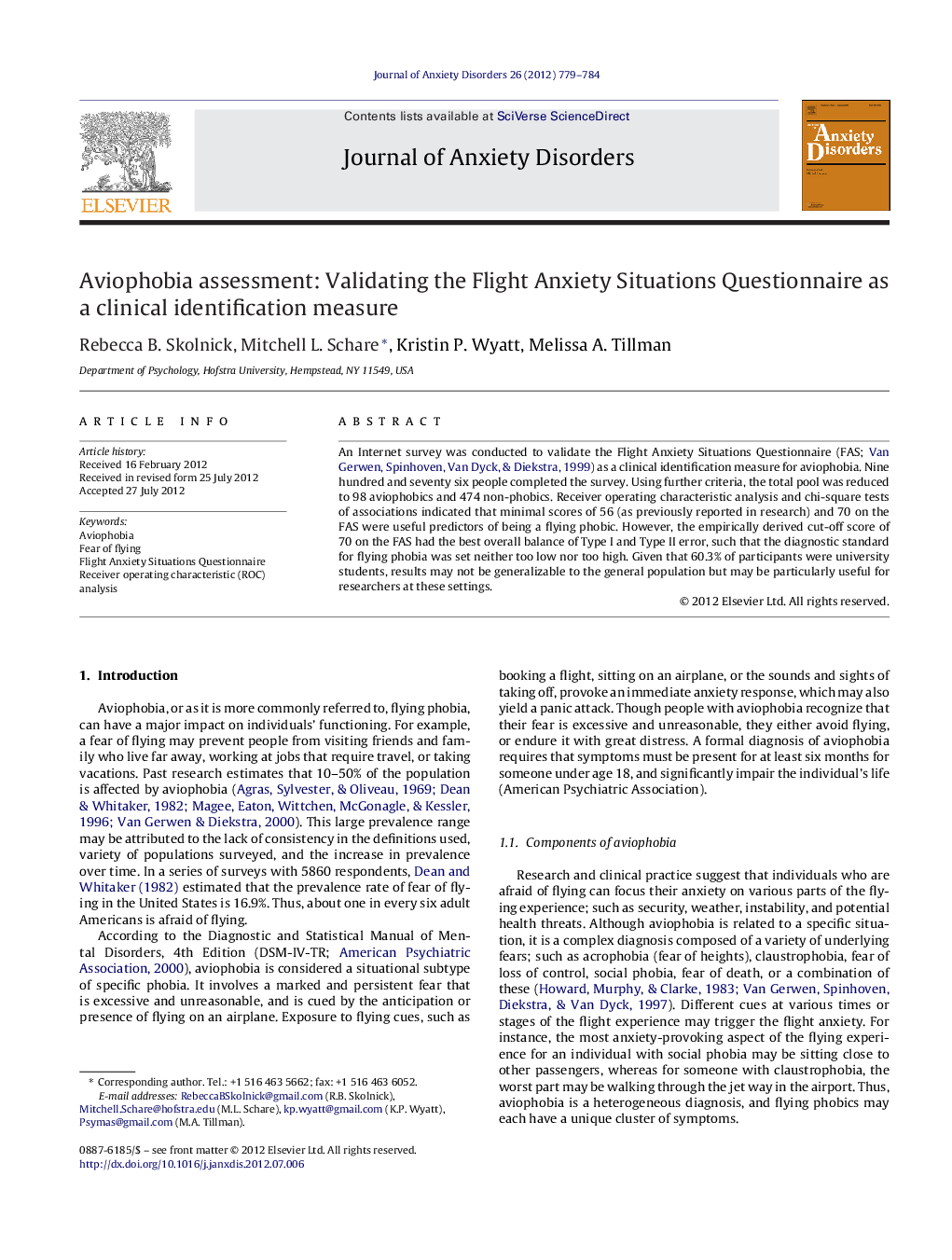| Article ID | Journal | Published Year | Pages | File Type |
|---|---|---|---|---|
| 909768 | Journal of Anxiety Disorders | 2012 | 6 Pages |
An Internet survey was conducted to validate the Flight Anxiety Situations Questionnaire (FAS; Van Gerwen, Spinhoven, Van Dyck, & Diekstra, 1999) as a clinical identification measure for aviophobia. Nine hundred and seventy six people completed the survey. Using further criteria, the total pool was reduced to 98 aviophobics and 474 non-phobics. Receiver operating characteristic analysis and chi-square tests of associations indicated that minimal scores of 56 (as previously reported in research) and 70 on the FAS were useful predictors of being a flying phobic. However, the empirically derived cut-off score of 70 on the FAS had the best overall balance of Type I and Type II error, such that the diagnostic standard for flying phobia was set neither too low nor too high. Given that 60.3% of participants were university students, results may not be generalizable to the general population but may be particularly useful for researchers at these settings.
► There are a limited number of reliable and valid measures to assess aviophobia. ► The Flight Anxiety Situations Questionnaire (FAS) has been used in recent research. ► Previously suggested cut-off score for the FAS yielded high Type I error. ► Receiver operating characteristic (ROC) curve analysis was conducted. ► Optimal FAS cut-off score was determined, minimizing both Type I and Type II error.
